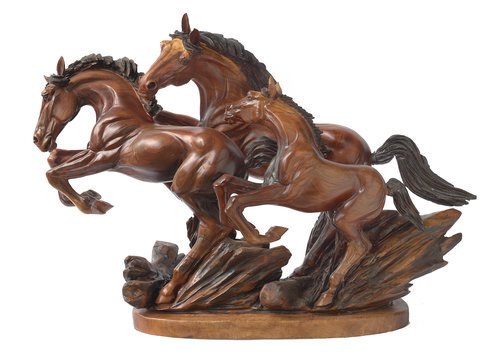J. Chester Armstrong
World renowned wood sculptor J. Chester “Skip” Armstrong’s roots run deep in Central Oregon, his chosen home.
He was born and raised in Berkeley, California, attended U.C. Berkeley in the 1960s and graduated with a degree in poetic theory and philosophy. In the early ’70s, after traveling through Central America and a brief stay in Vermont, he came north to Oregon looking for “untracked spaces,” where the stars are not drowned out by city lights.
For the past thirty-five years he has lived outside the little town of Sisters, Oregon. Skip lives with his wife, singer-songwriter, Anastacia, in the shadow of the Three Sisters Mountains, on twenty acres at the edge of the wilderness… his inspiration. To quote Chief Seattle, “The further we get from the forest floor, the less human we become; I would rather live in the middle of nowhere than any city on earth.”
Armstrong is a self-taught artist with a “can do attitude.” He helped run a YMCA camp at Spirit Lake, Washington, in the early ’70s before Mt. St. Helen blew, and wanted to introduce the campers to Native American North West totem poles and masks. He couldn’t find anyone to teach the class so took on the role of teacher himself and found he had a natural gift for shape and proportions.
Click on any image below to see an enlarged view.
Skip says, “I can ‘see’ the forms in the raw logs. It’s like Michelangelo says, “Just take away everything that doesn’t look like ‘nine horses running.'” For the last forty years, chainsaws, grinders, and chisels in hand Armstrong has done just that. “I’m hooked on wood sculpture.”
Out of local Oregon woods — juniper, maple, pine, and walnut — Armstrong carves the world he sees surrounding him. Eagles, osprey, wolves, cougars, coyotes howling at the moon, herons perched majestically at the river’s edge. It’s all the magic of life.
“This is what moves me. This, and the wild herds of mustangs that inhabit the west of my imagination.” He is best known for his horses, thundering herds all moving rhythmically as one.
Armstrong’s artistic style can be described as, “slightly stylized realism,” where the grace and rhythm of the sculpture’s outline or silhouette takes precedence over anatomical accuracy. Although his horses “look like horses” he says, “the art of sculpture is not to recreate the world verbatim but to interpret it.” His sculptures are charged with movement and emotion.
“I carve to reawaken the soul of the viewer to the primal energy and life force of earth-based imagery. My sculptures move in the rhythm of circles, spirals, and flowing lines dictated as much by the grain lines of the wood itself as by my own sense of the harmony of the natural world.”
Wood sculpture, like stone sculpture, is a subtractive process. You take away to reveal the form within. It is arduous and demanding and combines both artistic inspiration and physical perspiration. It is yielding but not forgiving. It does not allow for mistakes. But wood is organic, warm and alive and creates a “one of a kind” piece of art that traces its beginnings back to the living tree blown by the wind and fed by the sun and waters of the earth. Today, more than ever, we need to revere the natural world.
“My wood sculpture is the water that quenches that thirst.” It is the touching and being touched by the spirit of the Earth.Learn more about Mr. Armstrong and his work by visiting his website here, or visit him on Facebook to keep up with his latest work




